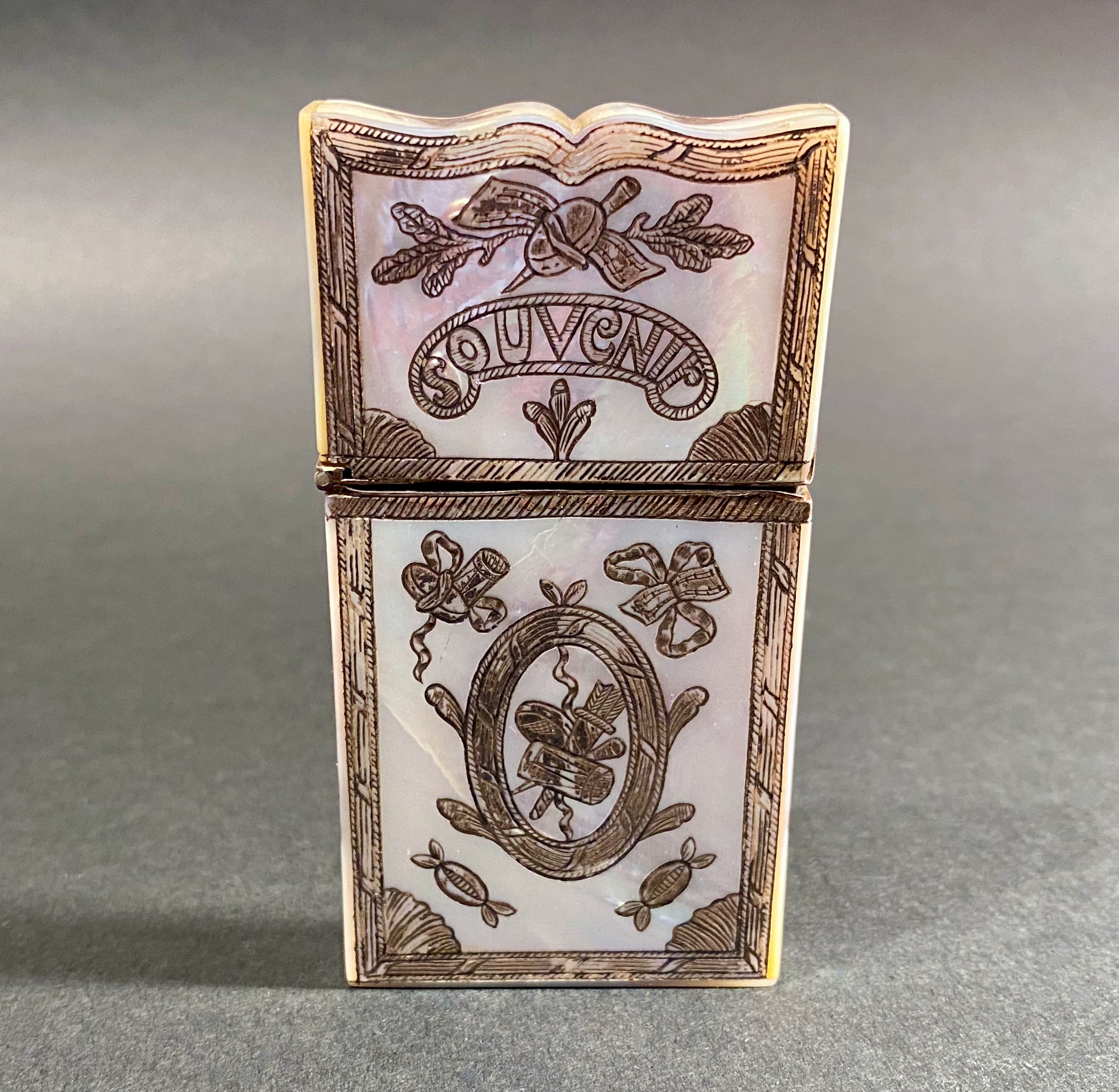

Title: Rare 19th-century mother-of-pearl engraved calling card box holder
Shipping: $29.00
Artist: N/A
Period: 19th Century
History: Art
Origin: North America > United States
Condition: N/A
Item Date: N/A
Item ID: 449
Very rare 19th-century mother-of-pearl engraved calling card or visiting card box holder. This is one of the best calling card holders I've ever seen. Just think about how many hours were put into this beautiful box. The craftsmanship is exquisite. Mother of pearl calling card boxes, also known as card holders, were popular during the 19th century as a way for individuals to store and display their calling cards. These boxes were often intricately decorated with mother of pearl and other decorative materials and were a symbol of social status and wealth. They were primarily used in high society and were considered a necessary accessory for those who wished to make a good impression. The boxes were often used to hold calling cards, which were small cards with a person's name and contact information that were left with a host when visiting their home. The boxes were usually made of wood and covered with layers of mother of pearl, which made them very beautiful and elegant. The mother of pearl was often sourced from pearl oysters which were abundant in the waters of Japan, China, and the Philippines, which were the main producers.
During the 19th century, having a calling card was a social convention and a way for individuals to announce their presence and request a visit from the host. It was a polite way to introduce oneself and make the first contact with a new acquaintance. The purpose of a calling card was to provide the host with the visitor's name and contact information, and to indicate that the visitor was of a certain social standing. Calling cards were often printed by professional printers, but they could also be hand-written by the individual. They were typically small cards, about the size of a modern business card, with the individual's name and address printed on them. They were usually made of thick paper, often with a glossy finish. The design of the card was considered important, as it reflected the individual's social status and taste. The practice of leaving calling cards was particularly popular among the upper classes, and it was considered a necessary part of etiquette for those who wanted to make a good impression. The use of calling cards eventually declined in the early 20th century with the rise of telephones and other forms of communication.